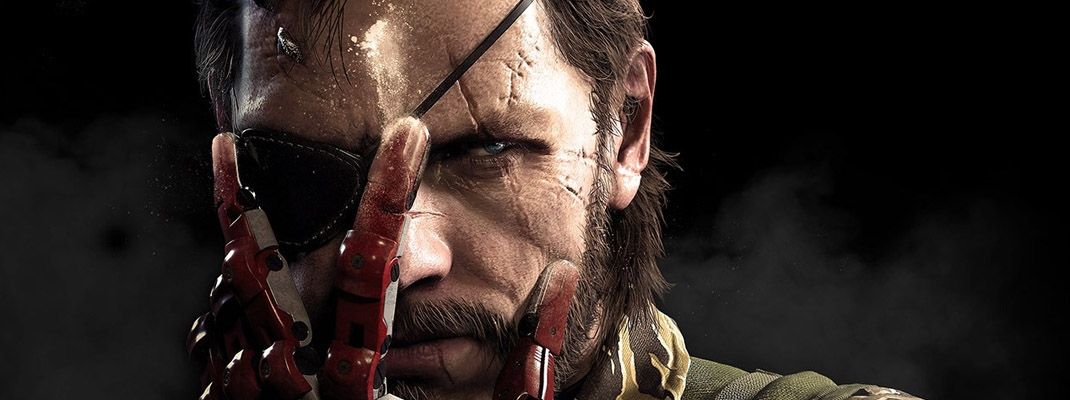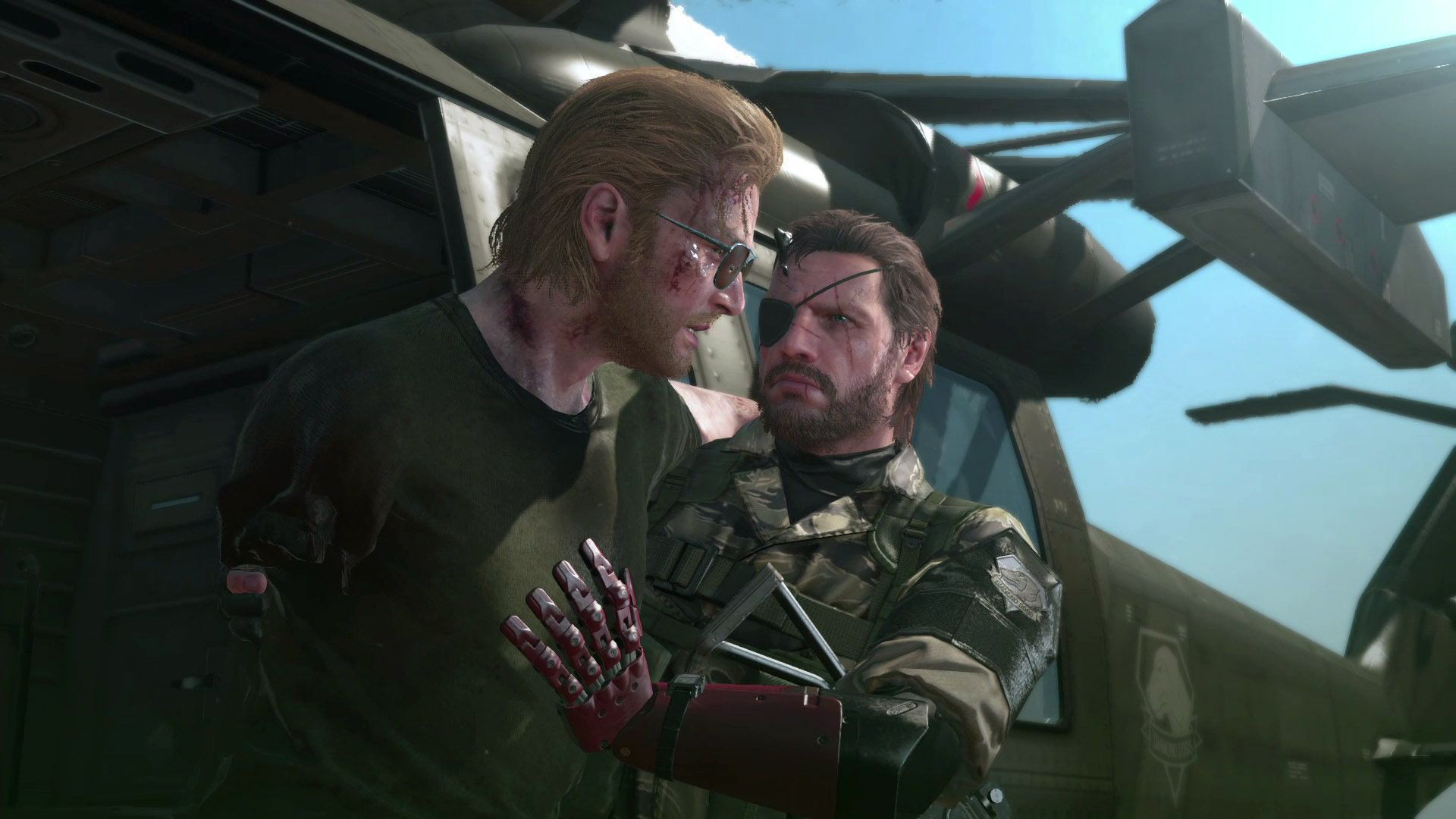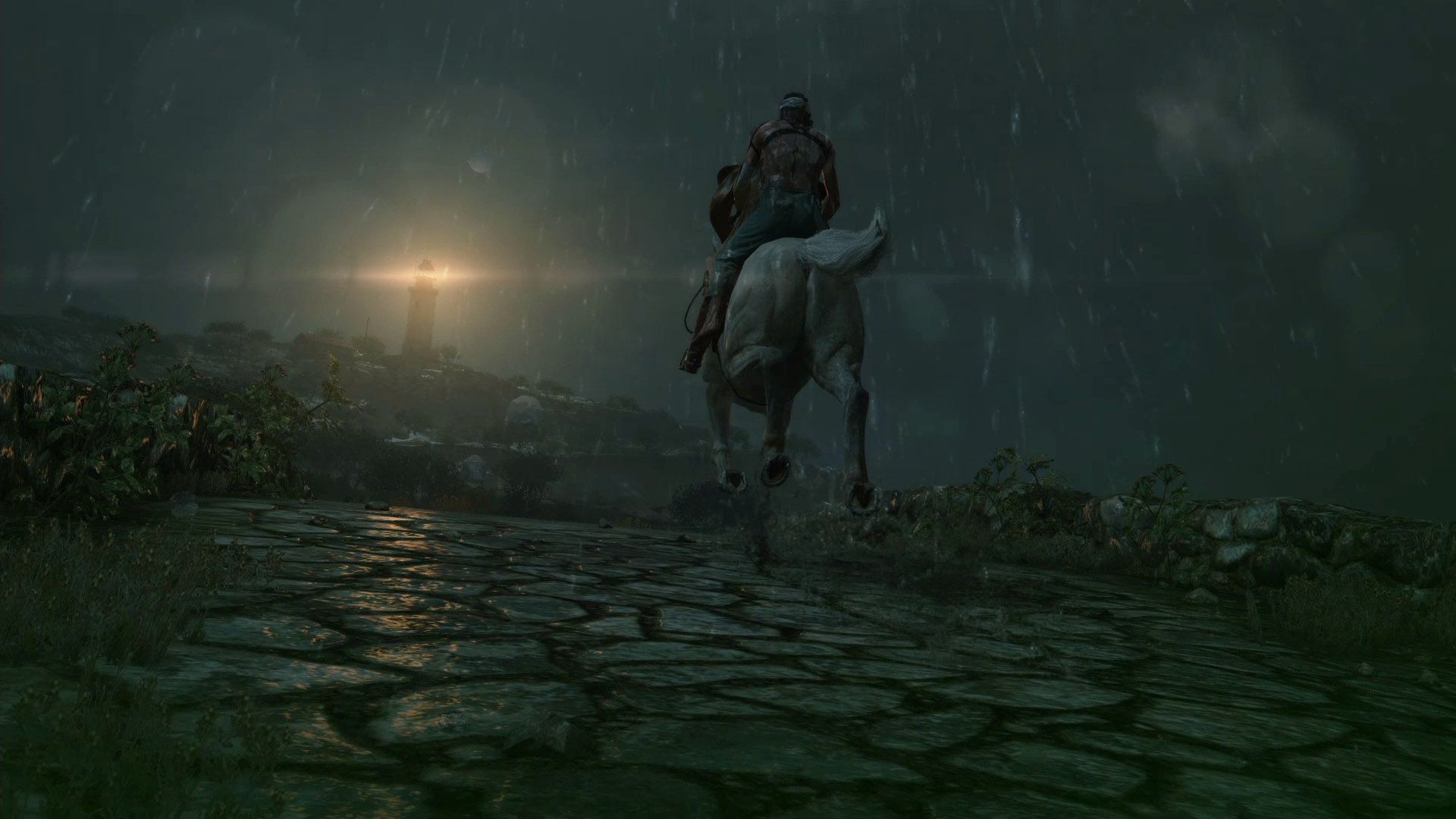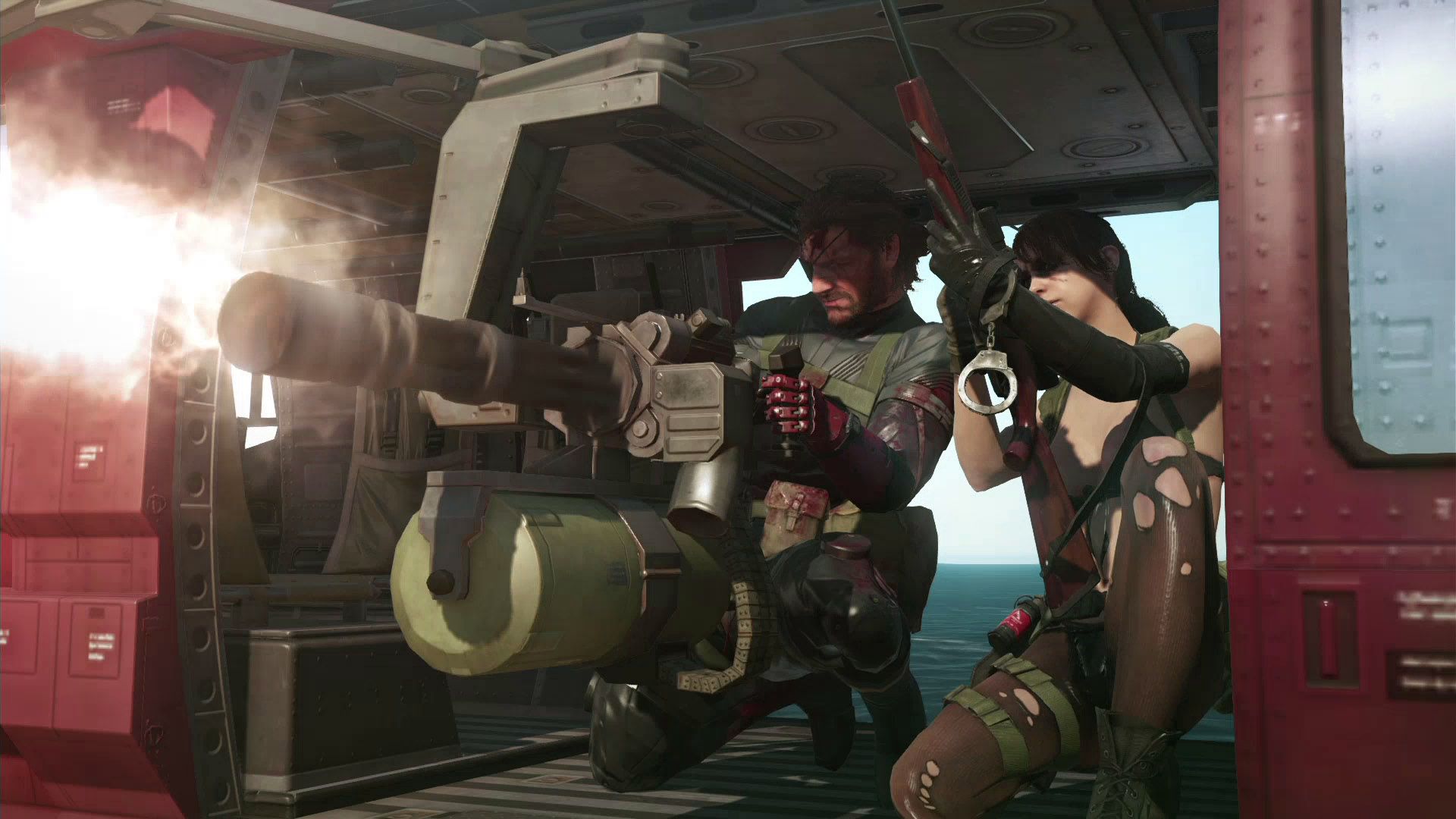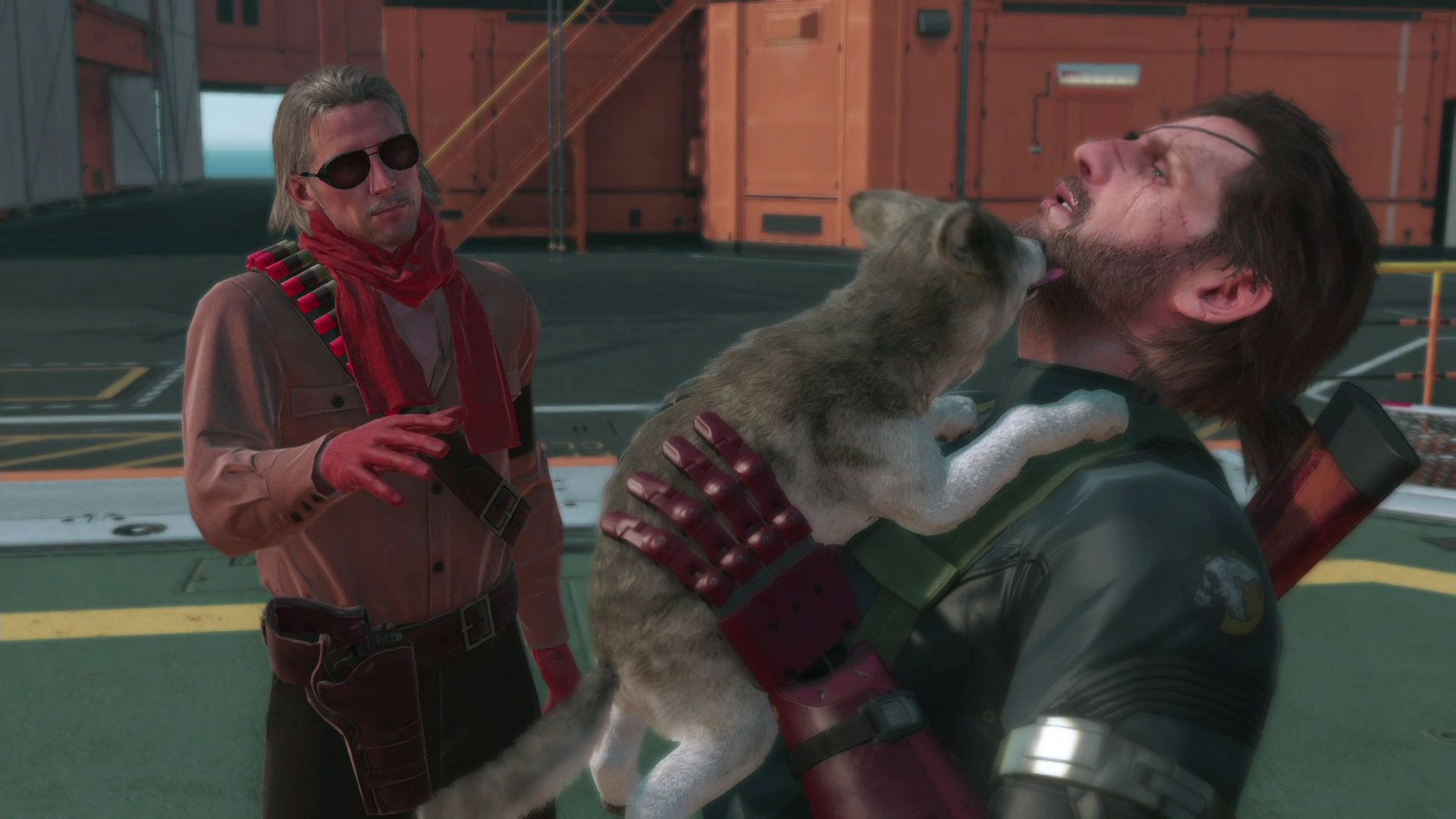Nearly thirty years ago, a man by the name of Hideo Kojima had a vision of a grand stealth game. Over the multiple decades he and his own studio (Kojima Productions) continued to iterate on the idea, bringing along his remarkable attention to detail, even for the smallest aspects that many players may have failed to realize. With the unfortunate events occurring at Konami which lead to his departure, his final project under his studio is more of a swan song to everything he has accomplished, and what a way to go out. Technically, the Snake story in the Metal Gear Solid timeline came to a conclusion with the fourth entry, but The Phantom Pain looks to allow the entire series to come full circle, leading right into how Big Boss, or now peculiarly named Venom Snake, became the antagonist of the first 1987 release.
Riding up to its release, it was difficult to determine how accessible The Phantom Pain would be in its mission structure, but this is an open world game through and through. While Metal Gear Solid 3 contained wider areas, it was still linear in its approach and scenario setups. This is entirely different, giving Venom Snake all the opportunity to explore vast landscapes with little limitations. This is one of the biggest differences from any Metal Gear release, but unfortunately it’s not without its faults. Snake is given a horse to get around a little faster, and there’s the ability to call a helicopter to take him to most points on the map, but both of these options aren’t as adequate as they could be due to The Phantom Pain’s massive scale. Going between multiple load screens while spending currency to be picked up and dropped off on a helicopter, or riding miles on horseback just to get to a single location should have been trimmed down to a more efficient fast travel system. This is particularly annoying in specific missions where Snake is dropped far outside of the mission zone where it sometimes takes fifteen minutes just to get to the point where he need to be, while trying to avoid alerting the enemy. It doesn’t help that the horseback riding feels a little rough around the edges, having the horse constantly balks while running and having trouble maneuvering in certain positions. At least it won’t buck you off. It has the feeling of Red Dead Redemption, but just not as refined.
With all that said, the open world is the best evolution the stealth genre could have asked for, or at least how Kojima Productions has developed it. There are other stealth action games that already feature an open world, such as Assassin’s Creed and Deus Ex, but none of them do it just quite like The Phantom Pain. Unfortunately, as much as the world is just ripe for exploration, selecting Afghanistan as the first major location, that will last you twenty or so hours, wasn’t the most ideal choice. Not only does it fail to really demonstrate the power of the FOX Engine with its rather lifeless brown aesthetic, but the areas are a little drab. That’s not to say the game isn’t dense, though, as each area has been finely crafted with distinct locations and structures, but having this as the first major open area won’t ignite your excitement as the later areas, do.
Back to the point at hand, how The Phantom Pain is structured allows for incredible diversity among player styles. There are multiple approaches that can be taken to get through a mission. It’s not as easy as whether or not you want to go guns blazing or sneak through the entirety of the level because things can turn on a hat instantaneously. Say you decide to go quiet but are spotted. Things will escalate quickly as enemies will call for support and there will be what seems like an endless wave of enemies. Alternatively, there’s the option to destroy enemy communication boxes that allow them to contact other bases, allowing the alert status to be isolated in one location. Weather conditions also play a large role into planning your next move, but it goes a little more towards acting on the fly as something such as a sandstorm can sweep over the land randomly. Same can be said about the time of day, although that can be a bit more controlled with the passage of time using either a cigar or using the game’s time conversion of three seconds per minute.
For those who’ve played the thirty-dollar prologue, Metal Gear Solid V: Ground Zeroes, you’ll feel right at home with the core gunplay in The Phantom Pain. There’s probably a way to get through the entire game without firing a shot, but for normal people, aiming down the sights and shooting multiple enemies over the course of the 30-100 hour campaign will be the standard. Of course you can get through every encounter without having to kill anyone, exposing the pacifist in you, although as someone who approaches each scenario with that exact mindset, I feel as if the actual combat encounters are just as exhilarating. It’s amazing how far Metal Gear Solid has come since its isometric camera angle days in the mid-90s. Gunplay has never felt better in a third person shooter, and even though the automated cover system can be a bit finicky at times, combat has been refined to be a gripping experience. It’s not just getting into large gunfights that’s enjoyable, but slowly picking off opponents with headshots from hundreds of meters away is just so gratifying.
The reflex system introduced in Ground Zeroes is also present in The Phantom Pain, and a must for the series, allowing Venom Snake a final chance to avoid being spotted, something he greatly needs. One of the stranger issues we had with the game is that enemies have a surprisingly large vision cone. In a lot of cases it makes sense, especially during the day when a soldier will be able to see something even at a far distance, but we ran into a number of issues where they shouldn’t have been able to see Snake, such as through doors or further than any normal human would be able to. A lot of factors play into this, such as weather and time of the day, but having the reflex system at least allows for this to be a bit more reasonable, although it damages the overall score at the end of missions. This also helps in another aspect of The Phantom Pain’s gameplay: Close Quarter Combat. CQC is still a very viable option, stunning soldiers with a simple throw or interrogating them to get information regarding where to find certain items or persons of interest in the world. Kojima Productions has created tight, responsive gameplay that will have you addicted for hours in the single, double or triple digits.
The way The Phantom Pain is structured is intelligently done. In the past couple of games, Side Ops were treated as constrained and segmented missions, but due to The Phantom Pain’s open world, Snake is now able to complete these optional tasks to great benefit while simply roaming the lands. The Fulton retrieval system is also back, but it’s accompanied by a number of upgrades. For one, later in the game Venom Snake is able to steal larger items than humans for his base of operations, such as vehicles, weapons, and containers full of important material. The more personnel and assets at your disposal, the stronger the PMC unit will become.
This all ties into the Mother Base component. Mother Base was initially taken from Metal Gear Solid: Peace Walker, but given an immense overhaul. This is Venom Snake, Adamska Ocelot and Kaz Miller’s fully customizable, newly formed base of operations for their PMC unit Diamond Dogs. Unlike Peace Waker, this is an actual 3D colossal structure that requires a vehicle such as a jeep to get to all of its locations. It has all of amenities a PMC unit needs: platforms for medical, support, base development, research and development, Intel, and combat. Here Snake will be able to bring in new recruits from the field through the Fulton system to better strengthen their overall status. By assigning recruits to different stations, new weapons and items can be developed, not to mention opening up the ability to send soldiers around the world, Assassin’s Creed: Brotherhood style, to accomplish jobs to earn material, new recruits, GMP (currency) or items. There are even some characters, although story-specific and very few to choose from, who can be added as Buddies to come along on missions. As you can see, Metal Gear Solid V: The Phantom Pain has a ridiculous amount of depth in its gameplay, containing an overwhelming amount of systems at play.
For a series well known for its incredibly obscure and longwinded storytelling, it’s hard to imagine how I’ve yet to bring up the plot. This is because Kojima Productions has basically done a 180 in this department. While the game still has an over-the-top plot, and this time it has gone even more deranged, with plenty of cutscenes to be found, the gameplay is the biggest draw. This was a large complaint in basically every Metal Gear Solid game in the past, having a poorly balanced structure between gameplay and cinematics. The Phantom Pain begins with a great deal of story and flair as we’re taken through more of the traditional Metal Gear Solid pacing, but it takes a while after this before the story really picks up. You can go for tens of hours with having only having seen a couple of minutes of meaningful scenes. The story of The Phantom Pain takes place almost directly after the events of Ground Zeroes, except instead of Big Boss waking up days after his run in with death, he awakes 9 years later. Understandably, this is a frightening notion, losing essentially 10-15% of your life, but after some initial struggles, the Boss finds his way to fit right back into society, or at least PMC society. We’re taken a lengthy journey as Snake rebuilds his legacy while meeting a number of new friends, foes and some who are a bit of a mystery.
While Metal Gear Online has been delayed until October, similar to how Rockstar handled Grand Theft Auto Online, there is still a competitive portion to The Phantom Pain. Unfortunately, at least at launch, the online functionality is far from great, having trouble even getting connected. When you do gain access, it doesn’t take long before this connection is lost. We were able to get a number of games in to test out how the attack and defense modes function, and they certainly are interesting. This ties right into the Home Base aspect as, depending which weapons and equipment are researched, the crew will be effective or ineffective against encounters. Here, players will be able to invade your Home Base and try to steal supplies. You are able to do the same, go into someone else’s world and try to take what isn’t yours. It’s an intense occurrence, especially if you get a player who knows what he’s doing, but it’s definitely not what makes The Phantom Pain special.
Closing Comments:
There’s nothing quite like Metal Gear Solid V: The Phantom Pain. It’s packed with potentially hundreds of hours of content, especially when digging into the online and base building aspects. To those who complain that Metal Gear Solid games fail to deliver in the gameplay department while focusing primarily on the obscurity of its story, this is the response to that. That’s not to say Kojima Productions went light on the plot as it’s even more ridiculous than ever, but the balance is now tilting in favor of the gameplay for the first time. This is a fully realized Peace Walker, with a large scale production behind it not possible in a handheld title. That’s not to say it’s without its faults though, as due to its enormous open world terrain through multiple locations in the world, the traversal system isn’t as adequate as it should be. That’s not to mention that Afghanistan is far from the most compelling opening location to show off the FOX Engine, focusing on a lot of lifeless, dull environments. Still, if there’s one game that will last you the rest of year and then some, it’s this. Metal Gear Solid V: The Phantom Pain is the epitome of stealth action. It contains not only some of the best combat mechanics available, but everything you could have wanted from a Metal Gear Solid game. Plus Kiefer Sutherland.
Metal Gear Solid V: The Phantom Pain
Reviewed on PlayStation 4
- Franchise
- Metal Gear Solid
- Released
- September 1, 2015
- Developer(s)
- Kojima Productions
- Publisher(s)
- Konami
- Genre(s)
- Action , Open-World
- ESRB
- M for Mature: Blood and Gore, Intense Violence, Sexual Themes, Strong Language
- How Long To Beat
- 46 Hours

